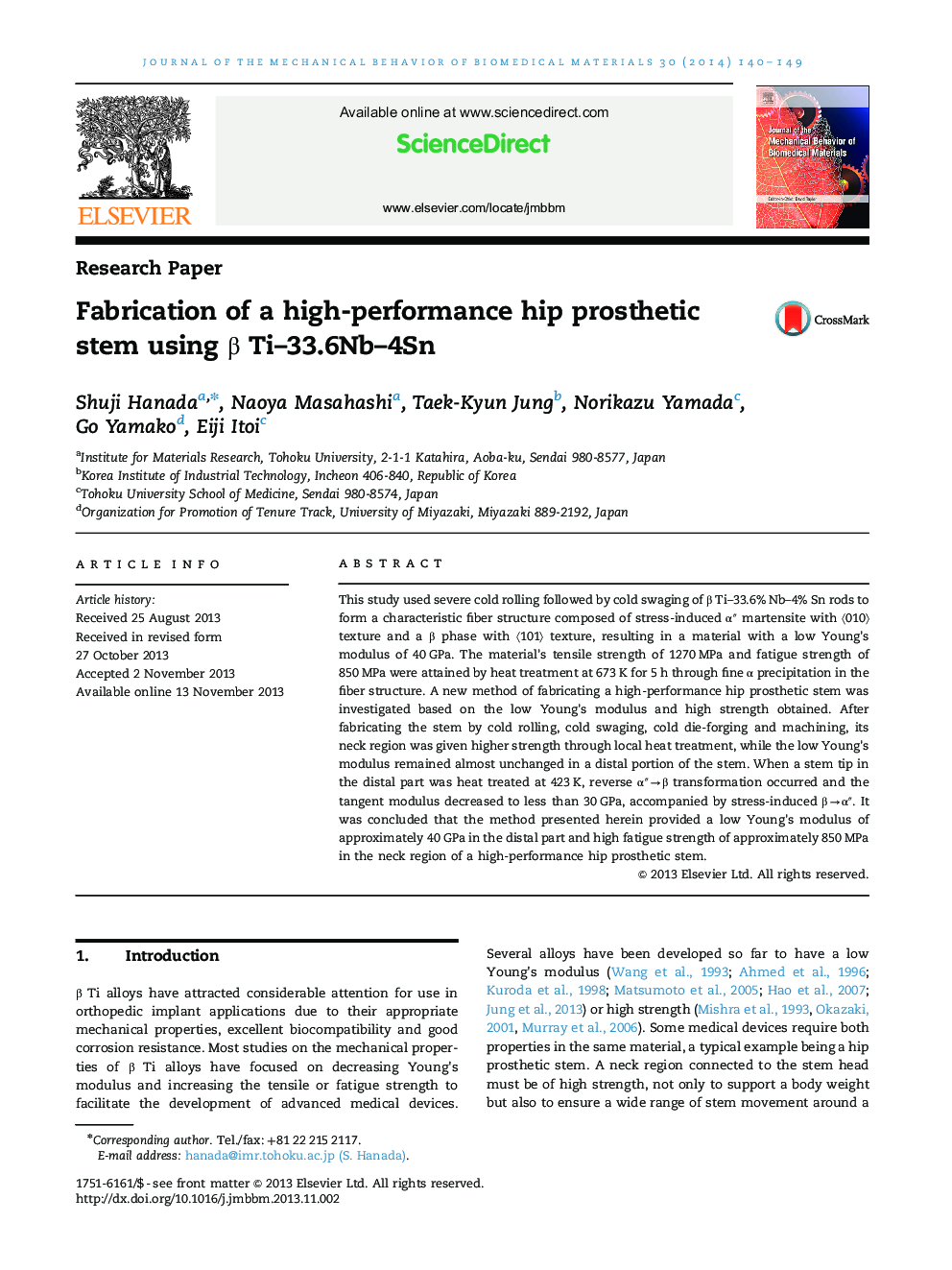| Article ID | Journal | Published Year | Pages | File Type |
|---|---|---|---|---|
| 7209001 | Journal of the Mechanical Behavior of Biomedical Materials | 2014 | 10 Pages |
Abstract
This study used severe cold rolling followed by cold swaging of β Ti-33.6% Nb-4% Sn rods to form a characteristic fiber structure composed of stress-induced αⳠmartensite with ã010ã texture and a β phase with ã101ã texture, resulting in a material with a low Young's modulus of 40 GPa. The material's tensile strength of 1270 MPa and fatigue strength of 850 MPa were attained by heat treatment at 673 K for 5 h through fine α precipitation in the fiber structure. A new method of fabricating a high-performance hip prosthetic stem was investigated based on the low Young's modulus and high strength obtained. After fabricating the stem by cold rolling, cold swaging, cold die-forging and machining, its neck region was given higher strength through local heat treatment, while the low Young's modulus remained almost unchanged in a distal portion of the stem. When a stem tip in the distal part was heat treated at 423 K, reverse αâ³âβ transformation occurred and the tangent modulus decreased to less than 30 GPa, accompanied by stress-induced βâαâ³. It was concluded that the method presented herein provided a low Young's modulus of approximately 40 GPa in the distal part and high fatigue strength of approximately 850 MPa in the neck region of a high-performance hip prosthetic stem.
Related Topics
Physical Sciences and Engineering
Engineering
Biomedical Engineering
Authors
Shuji Hanada, Naoya Masahashi, Taek-Kyun Jung, Norikazu Yamada, Go Yamako, Eiji Itoi,
